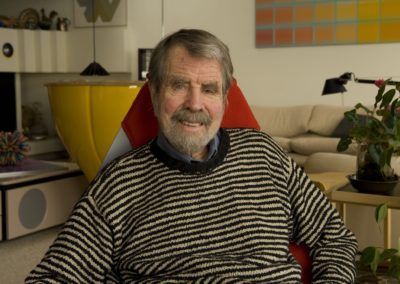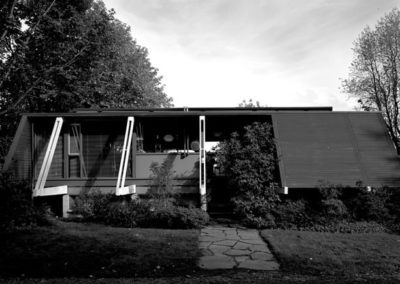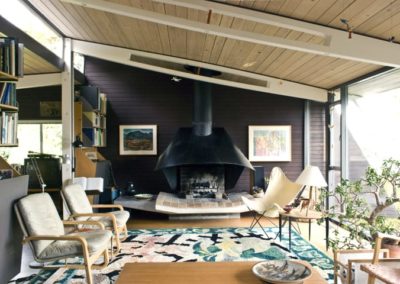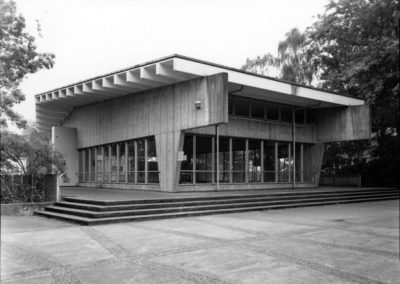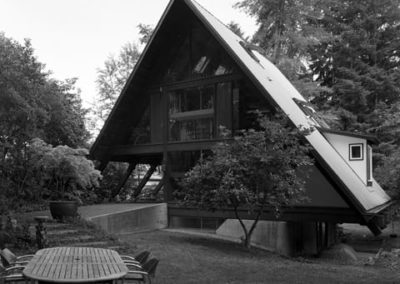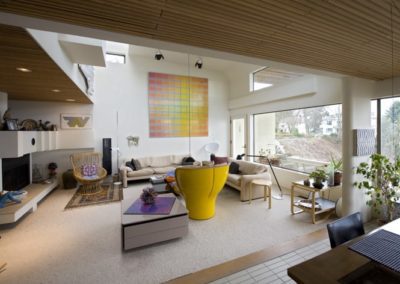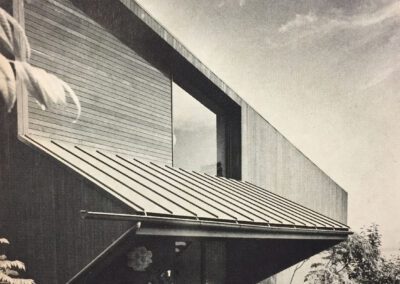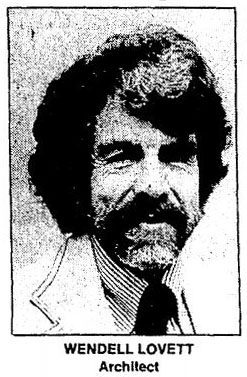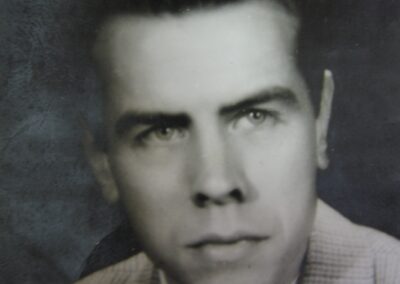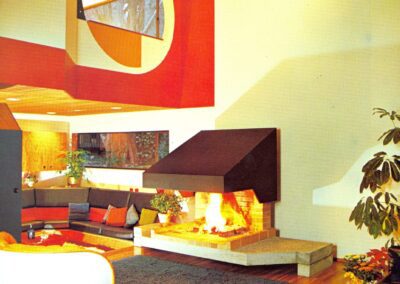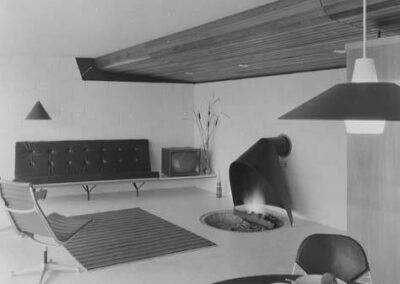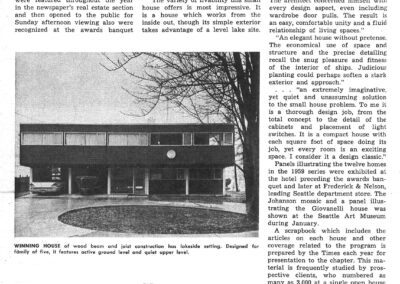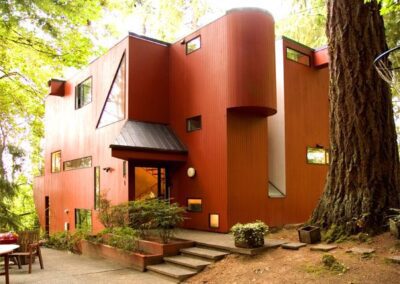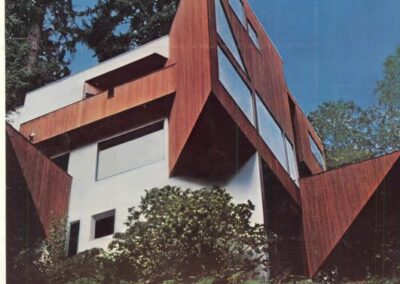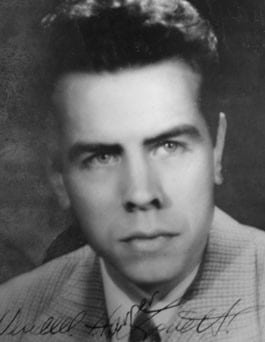
Lovett, Wendell H.
Favorite Classes
On Lionel Pries
Teaching Architecture
Architectural Influences
The Eames Influence
On Victor Steinbrueck
Designing in Context
Spatial Design
Rich Variety of Projects
Wendell Harper Lovett was born in Seattle on April 2, 1922. He received his formal architectural education at the University of Washington (UW) where he received his Bachelor’s degree in Architecture in 1947. While at the University, Lovett excelled in his studies and was awarded the AIA Student Silver Medal for excellence in design. He continued his education at the Massachusetts Institute of Technology and received his Master’s degree in 1948. While there, he was awarded the William R. Ware Prize and took at least one design studio from Alvar Aalto.
On the job training during summer and winter breaks garnered Lovett a variety of experiences. He served as a draftsman for George Groves (summer 1941); a carpenter’s helper at the American Building Co. (summer 1942); a draftsman for Stuart & Durham (fall 1945); NBBJ (1946-1947); and Ralph Rapson while in Boston (spring 1948).
After graduate school, Lovett accepted a job with the architectural firm of Bassetti & Morse and worked there until 1951 when he established his own office. He joined a group of architects to build a planned community (called Hilltop) east of Lake Washington. There he designed his first house (1951). The project received widespread publication, from the American Arts & Architecture magazine to the French l’Architecture d’Aujourd’hui magazine and was presented a State AIA Honor Award in 1953. This was the first of many awards to come.
During this early phase of Lovett’s career, he was heavily influenced by the Miesian idiom and the idea of using production components to create minimalist dwellings. He was equally influenced by some of the “Case Study” homes in California. Notable projects during this time include the Wallace H. Lovett House (1954); the Gervais & Connie Reed House (1955); and the Gordon Giovanelii House (1959, Seattle Times / AIA Home-of-the-Year, 1959). Each project received numerous design awards and was featured in a variety of domestic and international publications.
Lovett’s early accomplishments in the profession led to a teaching position at the UW in Fall 1948 as an Instructor. He was appointed an Assistant Professor in 1951; promoted to Associate Professor in 1960.
In the 1959-1960 academic year, Lovett taught at the Technical Institute in Stuttgart through a Fulbright Scholarship.
While in Europe, Lovett was heavily influenced by the work of Rolf Gutbrod, Fritz Leonhardt, and Ralph Erskine. He notes that he “discovered the idea of enclosure and containment” during this time. He would later call this idea his “stop” and “go” spaces and his designs began to move away from stark geometrical and industrial layouts, to anthropomorphic expressions of form.
Immediately upon his return to Seattle, Lovett, in collaboration with Seattle architect Ted Bower, was engaged in the design of a pedestrian walkway shelter system for the 1962 Seattle World’s Fair. Other notable projects include the Nuclear Reactor Building at the University of Washington where he was a partner in TAAG, The Architect Artist Group [with Streissguth, Zema, Torrence, and Moseley] (1961; demolished by the UW in 2016); the Gerber House (1962); the Meiller House (1966, Seattle Times / AIA Home-of-the-Month, Nov 1966); and the Studebaker House (1969, Seattle Times / AIA Home-of-the-Year).
In 1965, Lovett was appointed as a full professor at the University of Washington and continued an independent private practice on the side. Between 1972 and 1981, he designed sixteen custom houses including the Fey House (1973); the Scofield (1976); the Larsen House (1978); the Fujita House; and the Weston House (1981).
Over a span of 40+ years, many of his designs were featured in a variety of local, regional, national and international publications including Sunset; House & Garden; Architectural Record and Domus. From 1953 to 1980, over sixty articles appeared. Lovett has also won numerous honors and awards from design competitions for Progressive Architecture; to local, regional and state AIA Honor Awards, to the Seattle Times “Home of Year.”
Lovett’s desire to link art and architecture led him to product design. In 1954, he created the “Flexi-Fibre” later “Bikini” Chair, which was displayed at the International Exhibition of Modern Decorative and Industrial Arts in Milan. In 1966 he created the “Firehood” and “Toetoaster” hearths for Condon-King Company. After going into mass production, today the hearths can be found in thousands of dwellings across the county.
In 1987, Lovett retired from teaching and began work on the Villa Simonyi, a sprawling multi-phase project in Medina. Other works during his late career include the Cutler-Girdler House (1996); the Vagners-Christianson House (1999); and the Meilleur–Buren House (2001).
Lovett was elected to the AIA College of Fellows in 1978 and in 1993 was awarded the Seattle AIA Medal for distinguished lifetime achievement in architecture, design and design education.
Lovett passed away in Seattle at the age of 94 in 2016.
Oral History Project: Wendell Lovett participated in Docomomo US/WEWA’s oral history project. He was interviewed in January 2009. A complete transcript of the interview can be downloaded here. Segments from the interview can be heard by clicking the audio files on the left sidebar of this page.
Lauren Studebaker Residence | Mercer Island
Built 1969 | Source: University of Washington Special Collections
Living room of Gordon Giovanelli Residence | Mercer Island
Built 1959 | Source: University of Washington Special Collections
Gordon Giovanelli Residence | Mercer Island
Built 1959 | Source: Pacific Architect & Builder, February 1960
